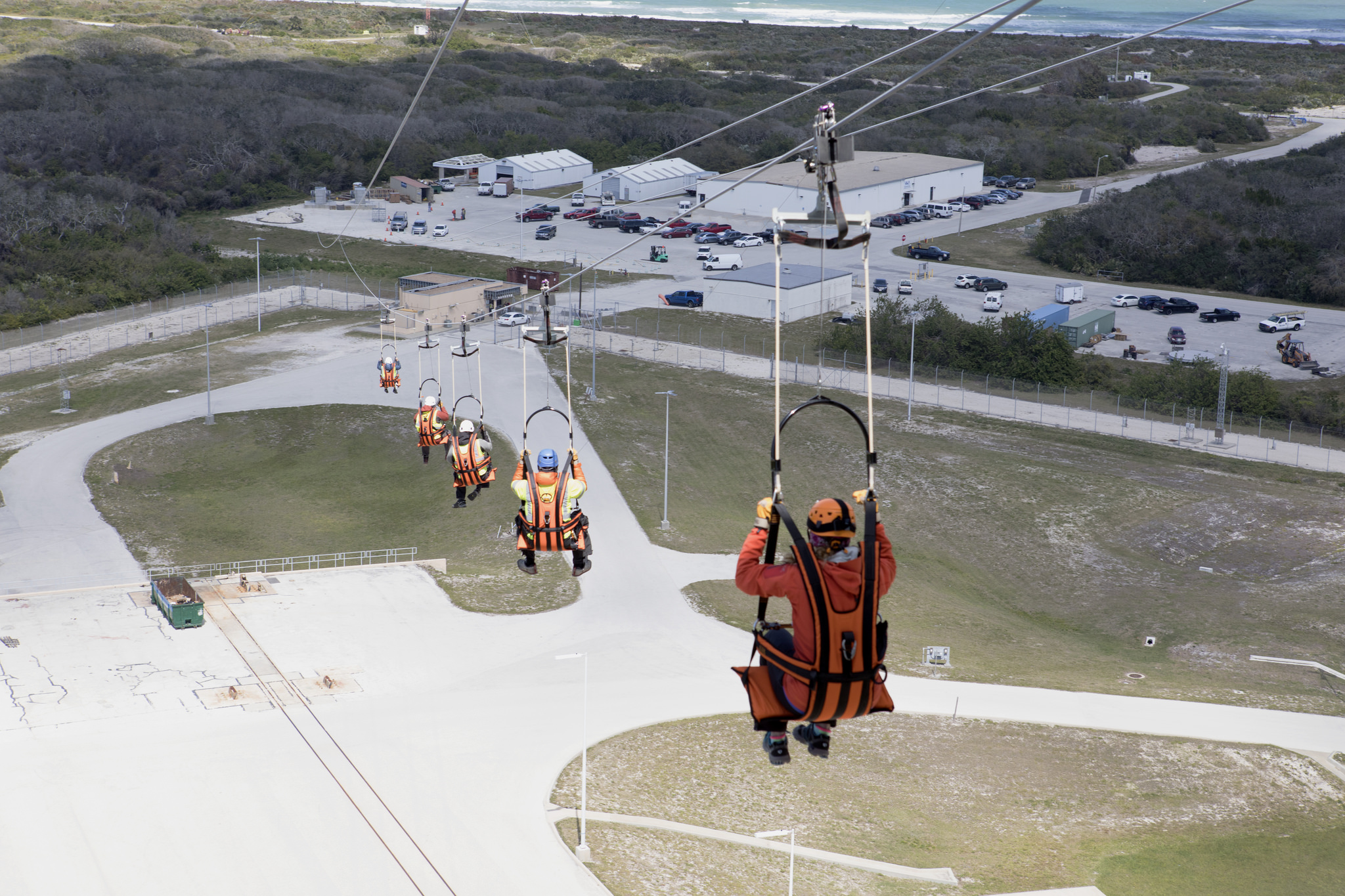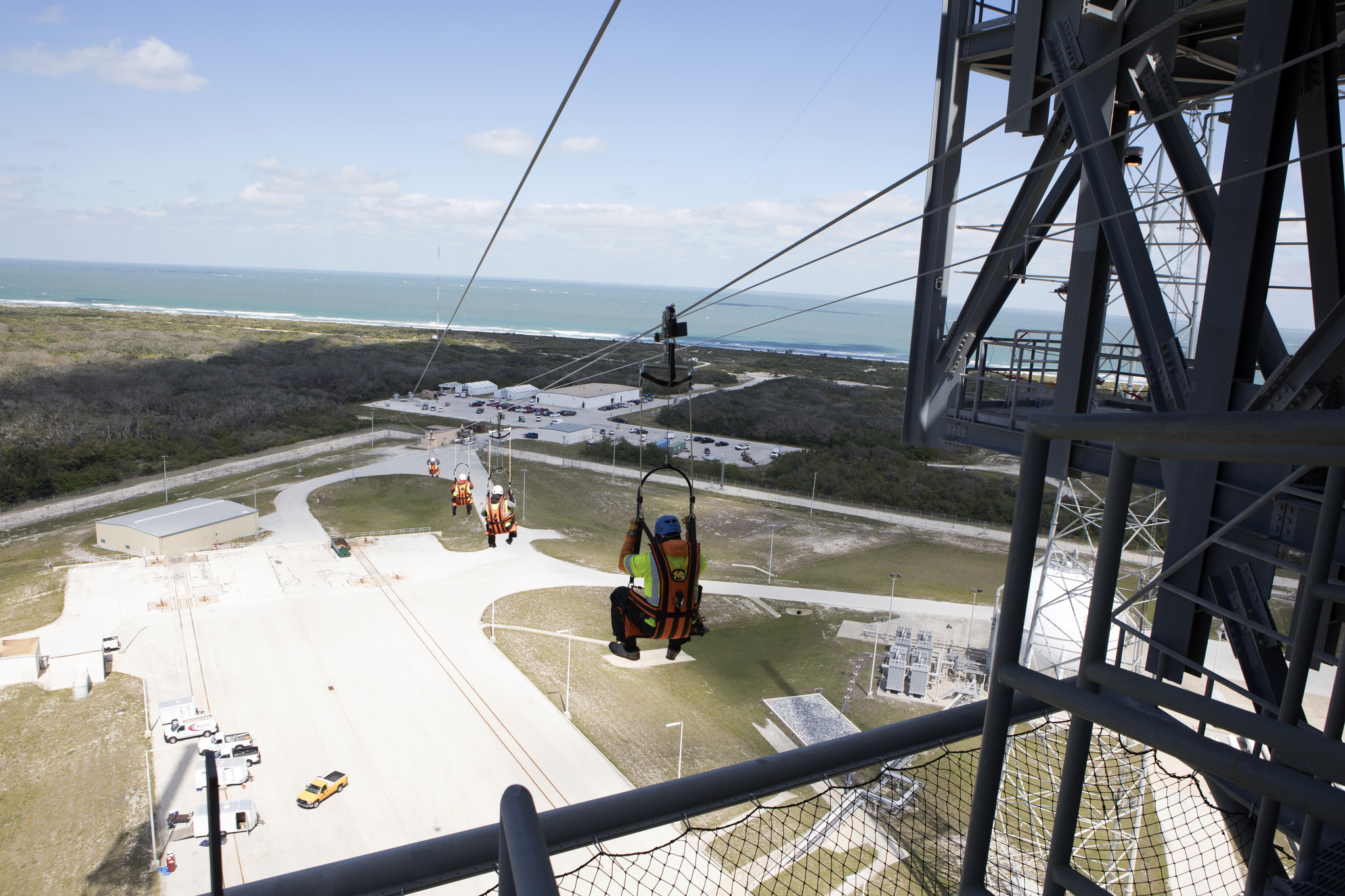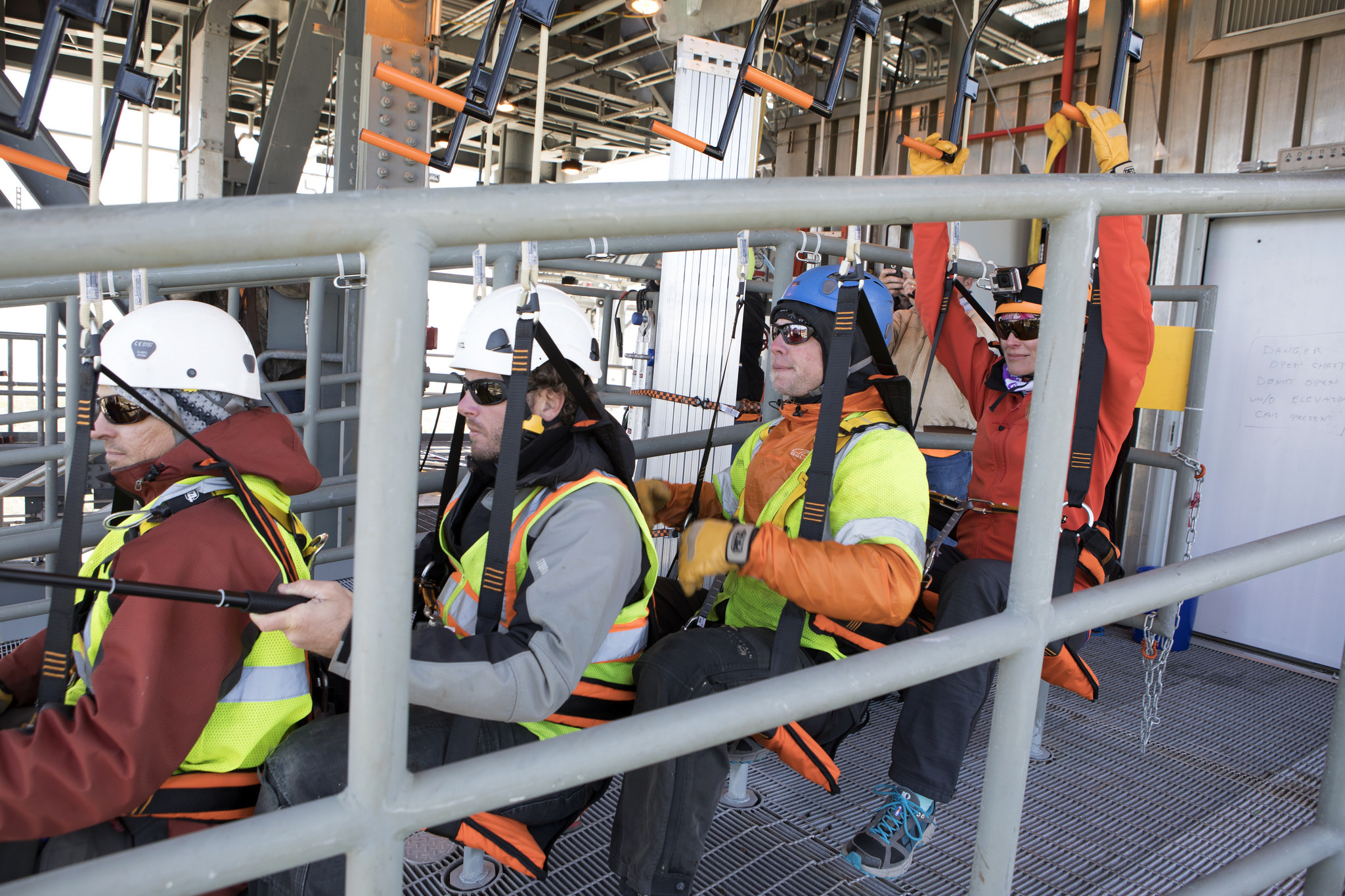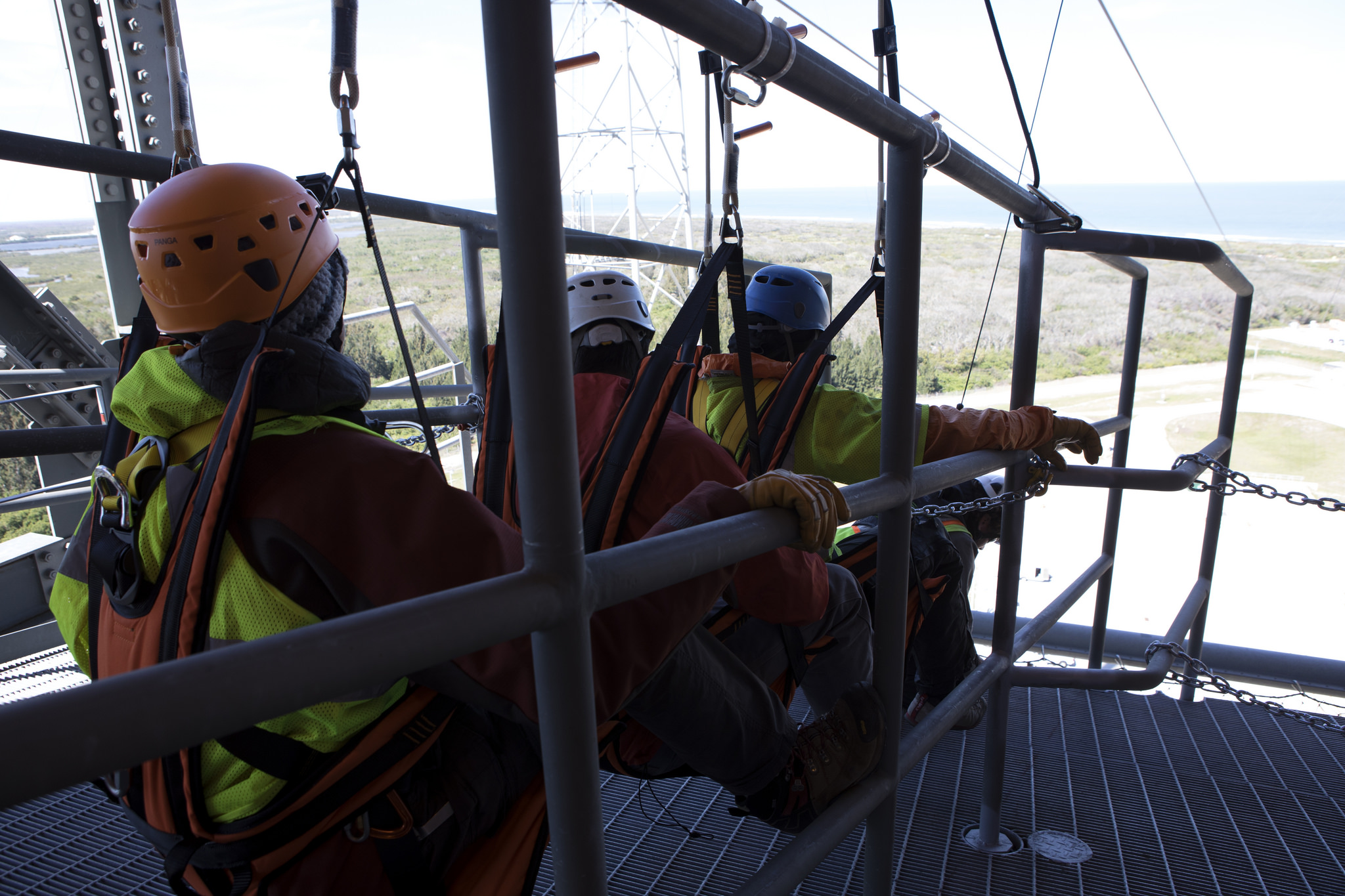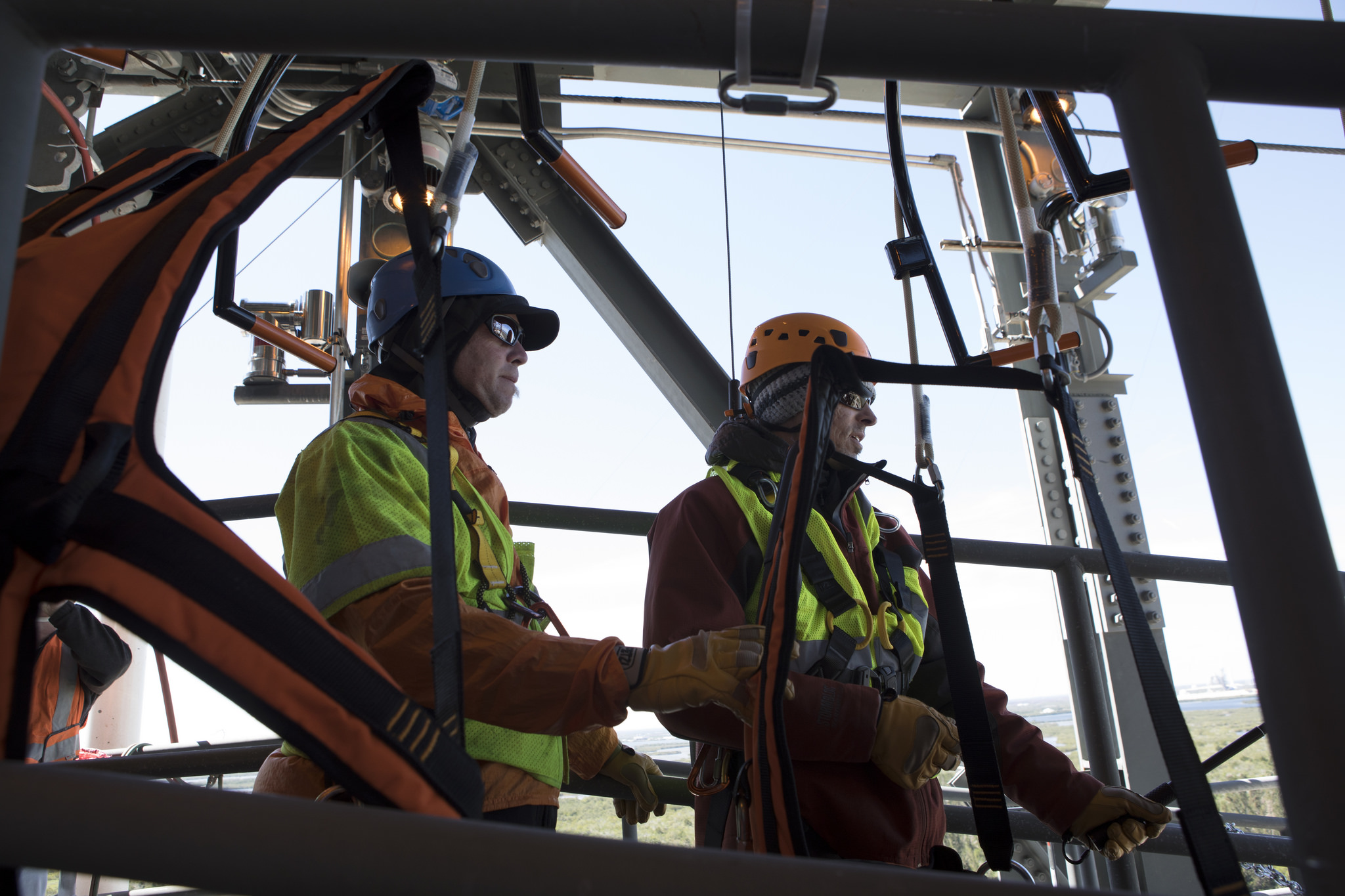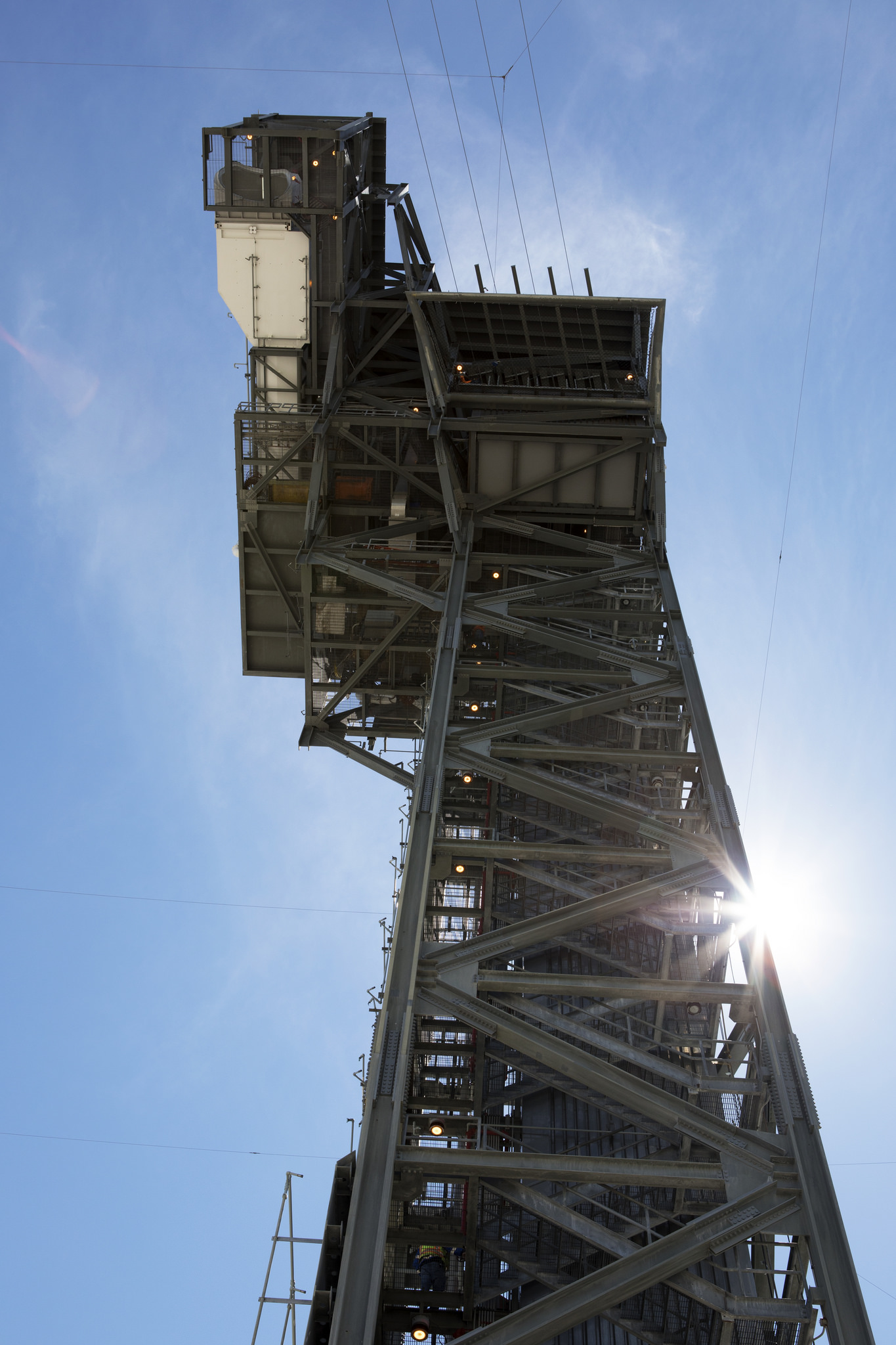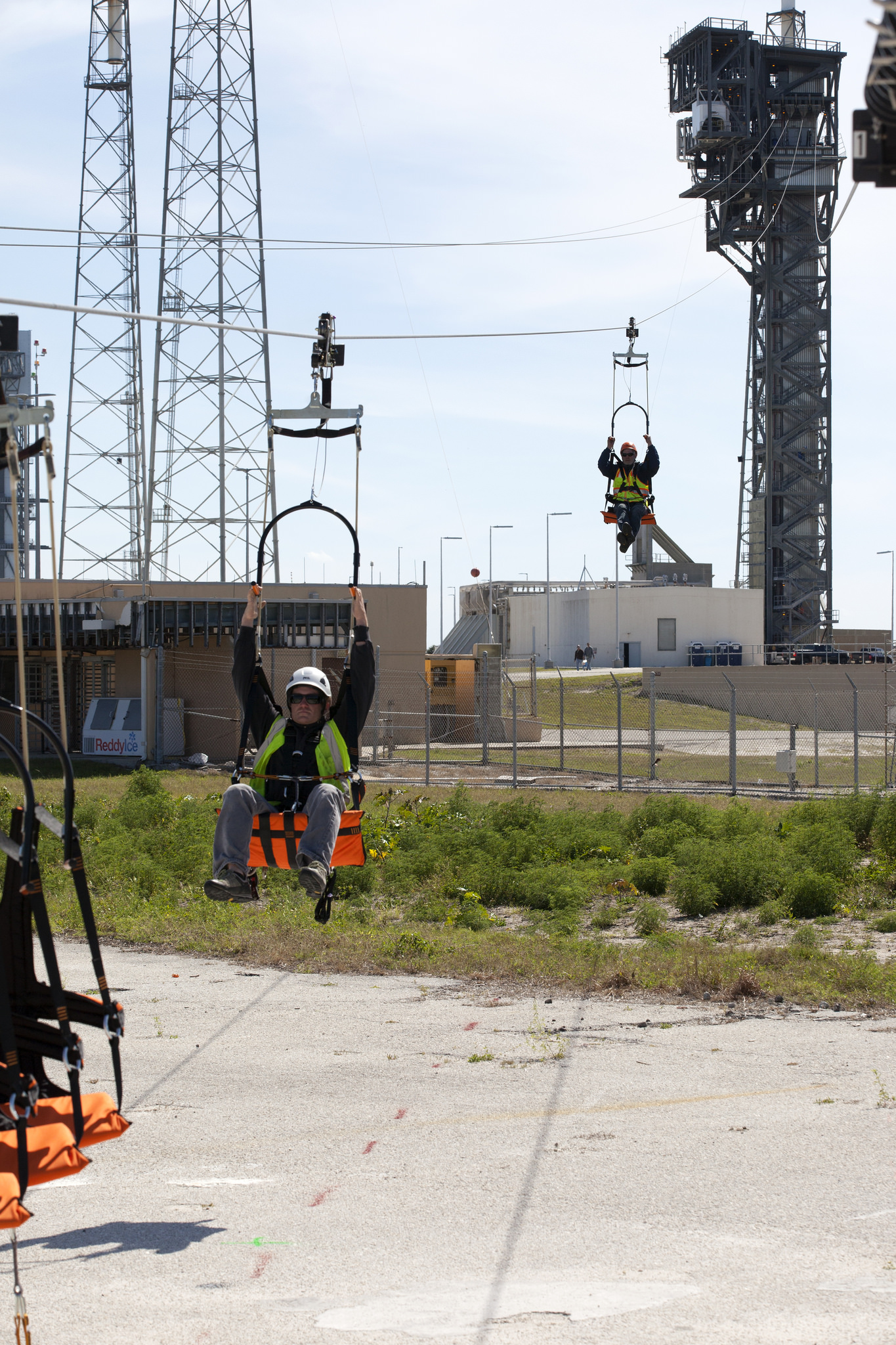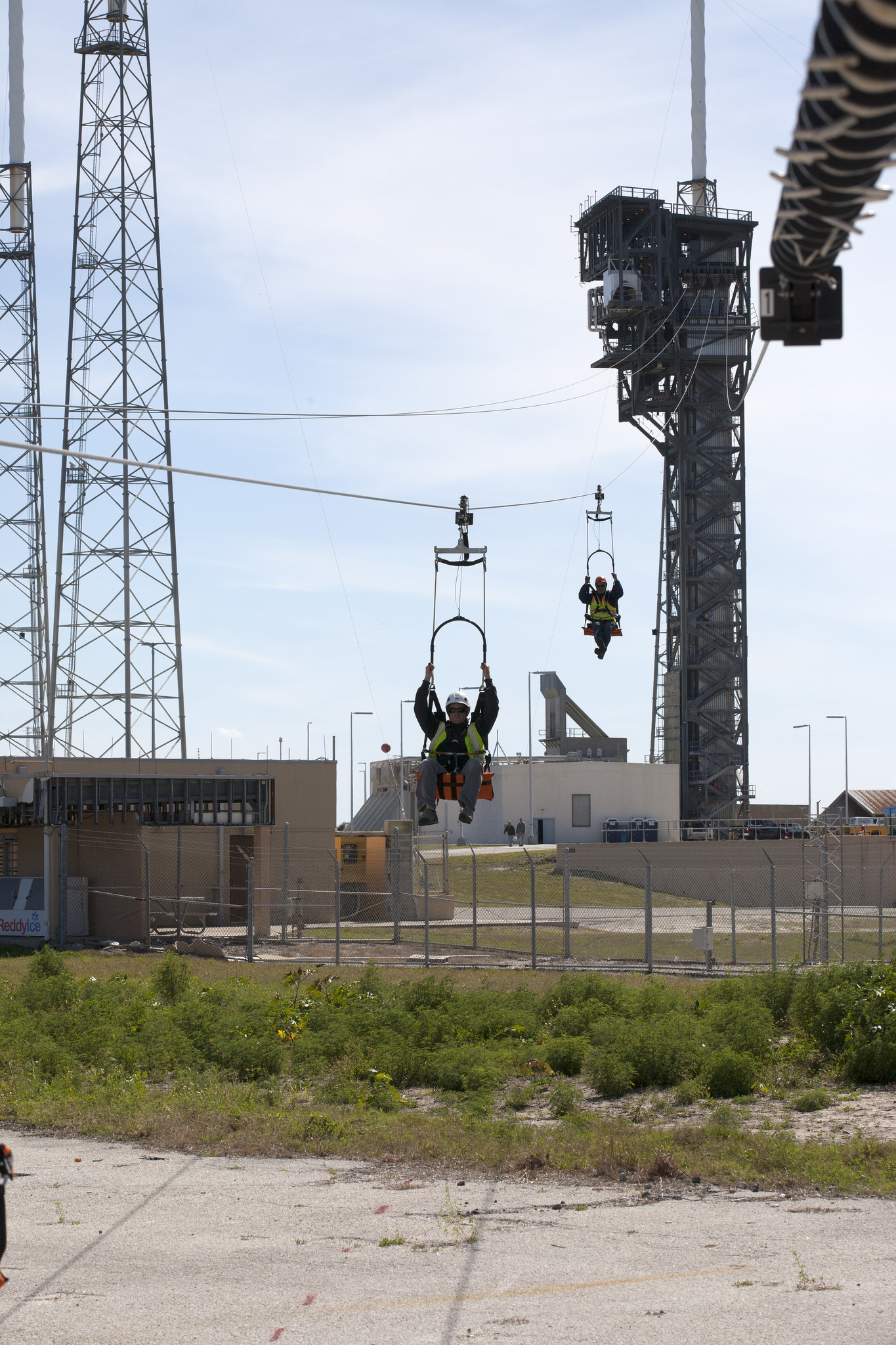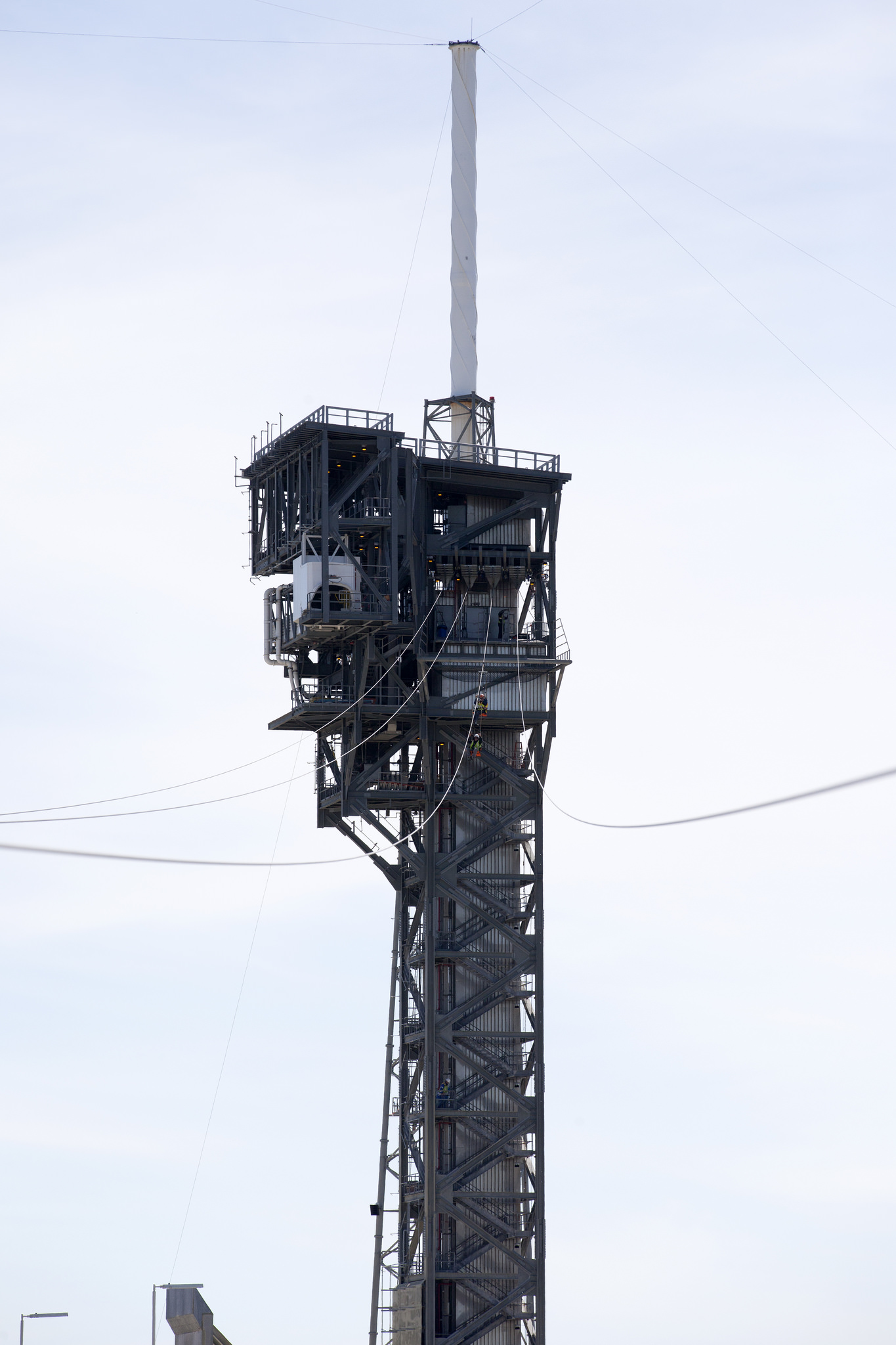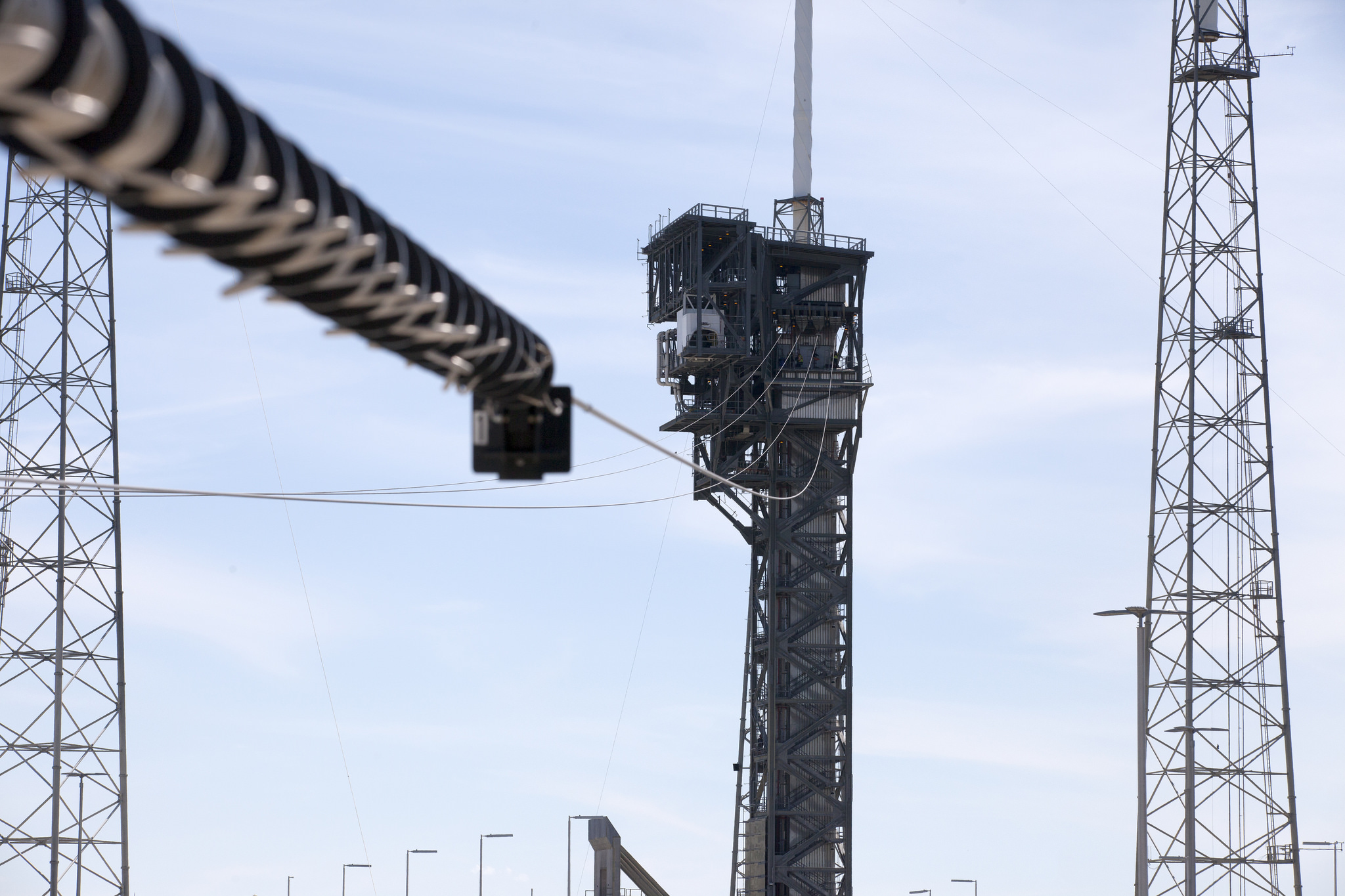In Photos: ULA's Zip Line Astronaut Escape System for Boeing's Starliner
Testing the System
The United Launch Alliance will use a novel zip line to move astronauts away from the launchpad in case of an emergency with their Atlas V rocket or Boeing Starliner CST-100 spacecraft. See how it works in photos.
This Photo:
Hang Tight
The Emergency Egress System at Space Launch Complex 41 recently conducted its final test. The system is designed so that in case of emergency, each individual on the Crew Access Tower rides a seat on a slide wire over 1,340 feet to a safe area.
The Ride of a Lifetime
Each seat on Space Launch Complex 41's Emergency Egress System are connected to wires located on level 12 of the tower, about 172 feet about the pad deck.
Taking Turns
Space Launch Complex 41 will launch Boeing's CST-100 Starliner atop a ULA Atlas V rocket. The mission to low-Earth orbit includes flying astronauts to the International Space Station.
Recording the Process
On level 12 of the Crew Access Tower, two engineers prepare for a ride on the Emergency Egress System in order to evaluate how it's working. They will ride on seats connected to a slide wire to a safe area at Space Launch Complex 41.
A Ground-Up View
From the ground, the cables compose the Emergency Egress System created by United Launch Alliance and Boeing at Space Launch Complex 41. ULA and Boeing prepare the pad to host missions sending the manned Boeing CST-100 Starliner to low-Earth orbit atop a ULA Atlas V. These missions are part of NASA's Commercial Crew Program.
Breaking space news, the latest updates on rocket launches, skywatching events and more!
Near the End
After an almost 1,340 foot ride from level 12 of the Crew Access Tower at Space Launch Complex 41, two engineers evaluate the Emergency Egress System. The system allows for a safe exit from the tower for crewmembers in case of an emergency.
Ride from the Sky
United Launch Alliance and Boeing continue safety modifications at Space Launch Complex 41 in preparations for launching a CST-100 Starliner atop a ULA Atlas V for missions as part of NASA's Commercial Crew Program. These two engineers are completing a test of the Emergency Egress System for crew on the Crew Access Tower.
Sliding into Safety
From atop the Crew Access Tower at Space Launch Complex 41, two engineers ride in folding seats on slide wires to a safe area on the complex as a test of the Emergency Egress System.
Safety Seats
The final test of the Emergency Egress System at Space Launch Complex 41 was recently completed. These seats, which are part of that system, hang from slide wires on level 12 of the Crew Access Tower. Crew will sit in these seats, in case of an emergency, and ride over 1,340 feet to safety.
Safety and Strength
The cables that comprise the Emergency Egress System at Space Launch Complex 41 reach nearly 1,500 feet from the top of the Crew Access Tower to a safe area at the complex. The Pad will be used to launch the manned Boeing CST-100 on a ULA Atlas V for missions as part of NASA's Commercial Crew Program.

Christine Lunsford joined the Space.com team in 2010 as a freelance producer and later became a contributing writer, covering astrophotography images, astronomy photos and amazing space galleries and more. During her more than 10 years with Space.com, oversaw the site's monthly skywatching updates and produced overnight features and stories on the latest space discoveries. She enjoys learning about subjects of all kinds.
